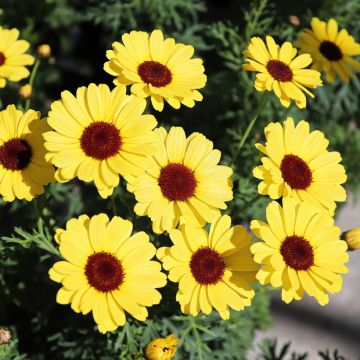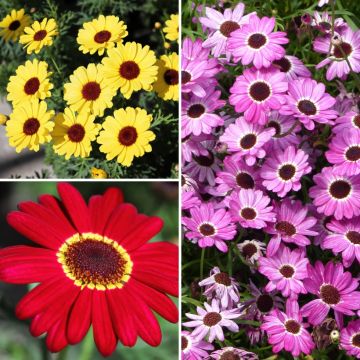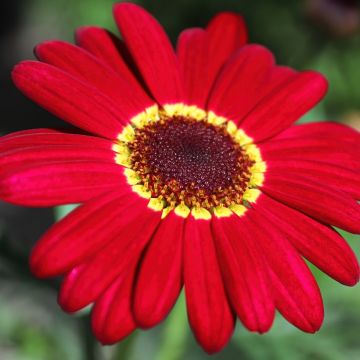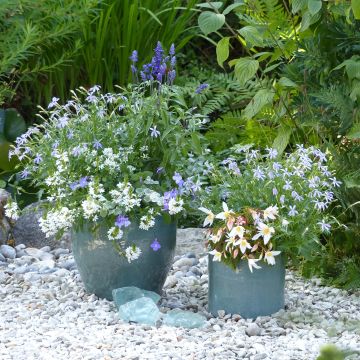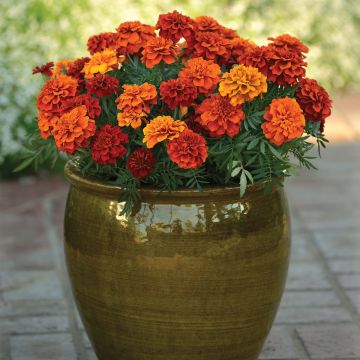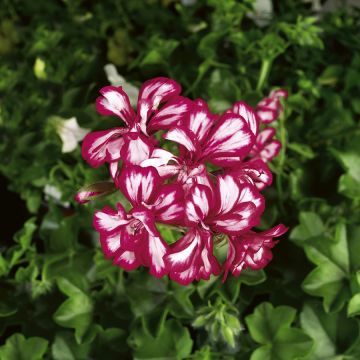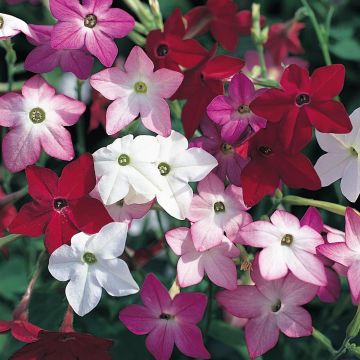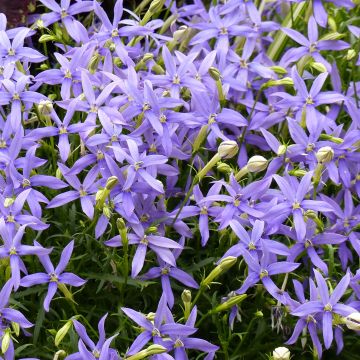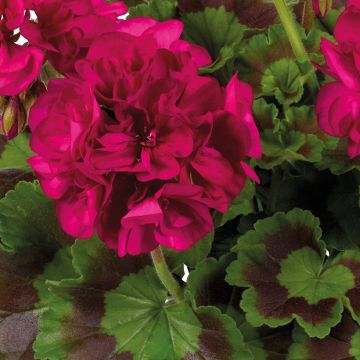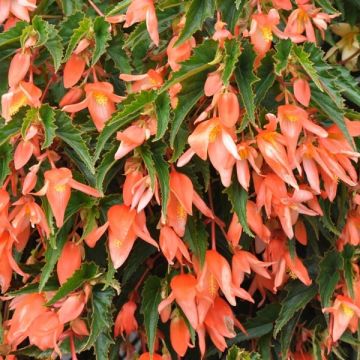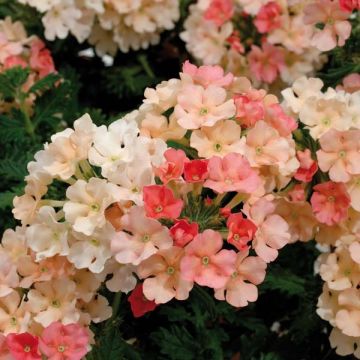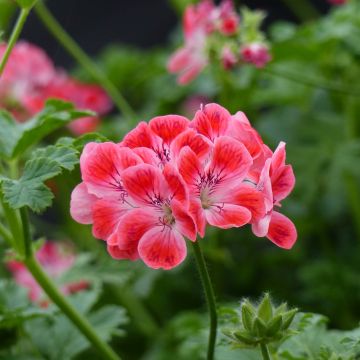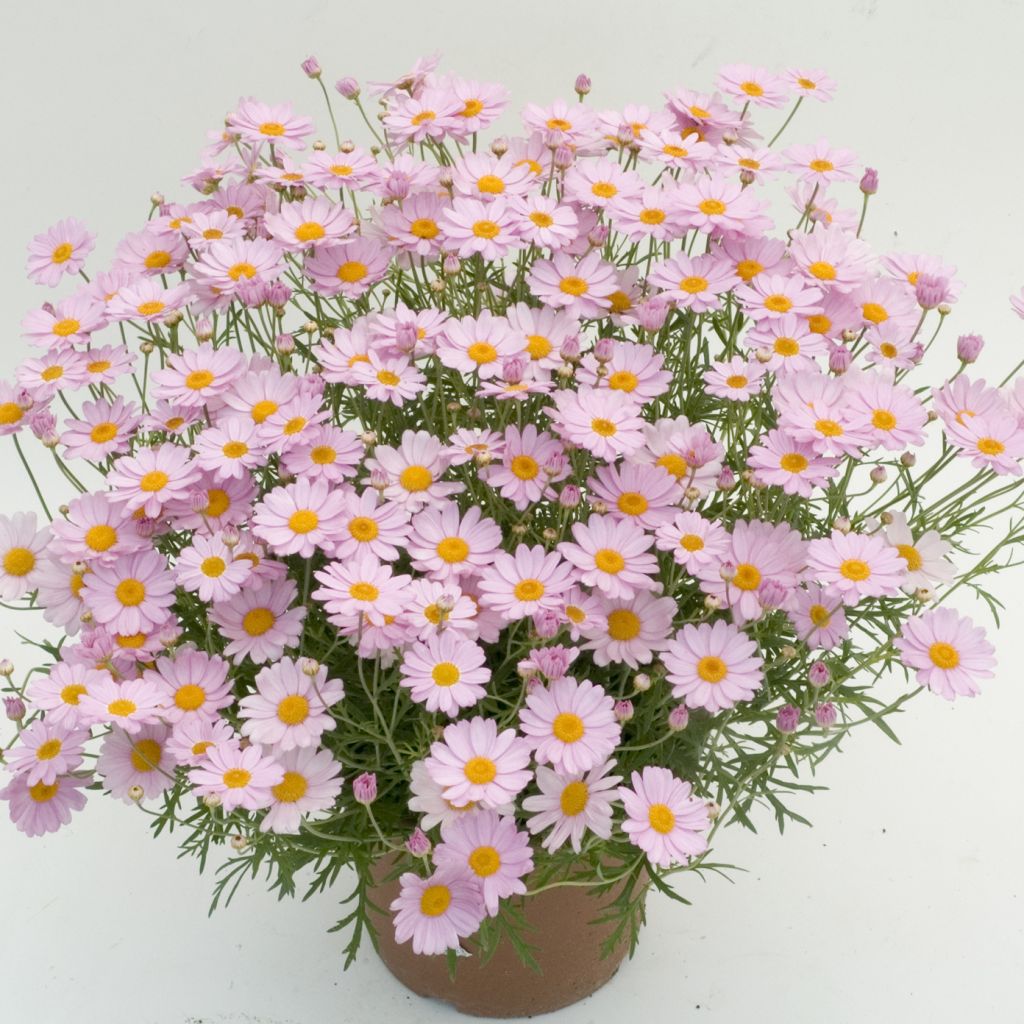

Argyranthemum Daisy Crazy Summit Pink - Marguerite
Argyranthemum Daisy Crazy Summit Pink - Marguerite
Argyranthemum frutescens Daisy Crazy® Summit Pink
Marguerite, Shrubby Chrysanthemum
Very vigorous, beautiful flowering of long duration. Very good.
Jocelyne, 29/09/2018
Why not try an alternative variety in stock?
View all →This plant carries a 6 months recovery warranty
More information
We guarantee the quality of our plants for a full growing cycle, and will replace at our expense any plant that fails to recover under normal climatic and planting conditions.
From €5.90 for pickup delivery and €6.90 for home delivery
Express home delivery from €8.90.

Does this plant fit my garden?
Set up your Plantfit profile →
Description
The Anthemis or Argyranthemum frutescens Daisy Crazy ® 'Summit Pink' belongs to the plants grouped under the name Chrysanthemum. It is a hybrid of horticultural origin, descended from a frost-sensitive species native to the Canary Islands. This beautiful round shrub is in flower from May until the first frost. It offers a foliage of bluish-green fennel, from which emerges a multitude of small daisies, 3 to 4 cm (1.2 - 1.6 in) in diameter, in various shades of pink, with a yellow center. This perennial plant is perfectly cultivated and without difficulty as an annual, in the sun and in well-drained soil. Its long flowering period and neat appearance make it an ideal plant for flower pots, but also an excellent rockery or slope plant.
Argyranthemum frutescens belongs to the Asteraceae family. Although the type, a white-flowered shrub reaching 1 m (3.3 ft) in height, is no longer widely cultivated, it has left a numerous offspring through hybridization with other species. The plants in the Daisy Crazy® series are frost-sensitive perennials that are commonly cultivated as annuals for their long flowering period and their vivid and varied colours. They are compact and round, upright and bushy, reaching 50 to 60 cm (19.7 - 23.6 in) in height and at least 50 cm (19.7 in) in width. They form mounds of very finely cut decorative foliage, with a light and bluish-green appearance. Their growth is rapid. The flowering, very abundant, takes place from May-June to October-November, even more generously if the faded flowers are regularly removed. The flowers resemble small semi-double daisies, 3.5 cm (1.2 in) wide, with a golden yellow centre. Around it radiate pink peripheral ray florets. The combination of the colours of the inflorescences and the foliage is remarkable. The stems are well-branched. The Argyranthemum frutescens is hardy up to -3/-4°C, it is possible to keep it for several years if it is stored in a cold greenhouse or conservatory.
In love with the sun, anthemis dislike excess moisture in winter more than anything else. Under climates spared by frost, plant them in well-drained ordinary soil, slightly acidic, neutral, or strongly calcareous. Forming delightful rounded and fully blooming clumps in no time at all, the Chrysanthemum Daisy Crazy ® 'Summit Pink’ is superb when paired with white roses, silver artemisias, or love-in-a-mist. It can be very useful for starting a brand new garden, after the passage of construction machinery. It can be installed in rural flowerbeds but also in more carefully tended flower beds, rockeries, stair borders, or at the turn of a path in a steep garden. They provide a fantastic spectacle in flower pots, along with Dichondra Silver Falls, silver basket, pasque flowers, or dwarf snapdragons, on the terrace or balcony.
Note: Please be aware that our young plants in mini-pots are professional products reserved for experienced gardeners: upon receipt, transplant and store them in sheltered areas (conservatory, greenhouse, cold frame...) at a temperature above 14°C for a few weeks before being installed outdoors once all risk of frost has passed.
Report an error about the product description
Flowering
Foliage
Plant habit
Botanical data
Argyranthemum
frutescens
Daisy Crazy® Summit Pink
Asteraceae
Marguerite, Shrubby Chrysanthemum
Cultivar or hybrid
Other Argyranthemum
Planting and care
Pot cultivation is easy in all regions. Install Argyranthemum Daisy Crazy® 'Summit Pink' in a light and fertile substrate, composed of compost and sand, enriched with a little compost. Drainage is important, and watering should be abundant but spaced out, to allow the soil to dry slightly between waterings. Pots can be overwintered in a bright and well-ventilated room, but with very little heating to keep the plants frost-free.
In very mild climates, plant Argyranthemum Daisy Crazy® 'Summit Pink' in open ground, in well-drained, slightly acidic, neutral, or strongly calcareous soil. These plants are not very demanding in terms of soil quality. However, in heavy soil, their lifespan is shorter than in poor and dry soil. Their resistance to cold is greater when the soil is dry. Cutting back the stems to 20 cm (7.9 in) above the ground in early September or in spring promotes the regeneration of clumps and, at the end of the season, a slight regrowth.
Planting period
Intended location
Care
-
, onOrder confirmed
Reply from on Promesse de fleurs
Plug plants - Annuals
Haven't found what you were looking for?
Hardiness is the lowest winter temperature a plant can endure without suffering serious damage or even dying. However, hardiness is affected by location (a sheltered area, such as a patio), protection (winter cover) and soil type (hardiness is improved by well-drained soil).

Photo Sharing Terms & Conditions
In order to encourage gardeners to interact and share their experiences, Promesse de fleurs offers various media enabling content to be uploaded onto its Site - in particular via the ‘Photo sharing’ module.
The User agrees to refrain from:
- Posting any content that is illegal, prejudicial, insulting, racist, inciteful to hatred, revisionist, contrary to public decency, that infringes on privacy or on the privacy rights of third parties, in particular the publicity rights of persons and goods, intellectual property rights, or the right to privacy.
- Submitting content on behalf of a third party;
- Impersonate the identity of a third party and/or publish any personal information about a third party;
In general, the User undertakes to refrain from any unethical behaviour.
All Content (in particular text, comments, files, images, photos, videos, creative works, etc.), which may be subject to property or intellectual property rights, image or other private rights, shall remain the property of the User, subject to the limited rights granted by the terms of the licence granted by Promesse de fleurs as stated below. Users are at liberty to publish or not to publish such Content on the Site, notably via the ‘Photo Sharing’ facility, and accept that this Content shall be made public and freely accessible, notably on the Internet.
Users further acknowledge, undertake to have ,and guarantee that they hold all necessary rights and permissions to publish such material on the Site, in particular with regard to the legislation in force pertaining to any privacy, property, intellectual property, image, or contractual rights, or rights of any other nature. By publishing such Content on the Site, Users acknowledge accepting full liability as publishers of the Content within the meaning of the law, and grant Promesse de fleurs, free of charge, an inclusive, worldwide licence for the said Content for the entire duration of its publication, including all reproduction, representation, up/downloading, displaying, performing, transmission, and storage rights.
Users also grant permission for their name to be linked to the Content and accept that this link may not always be made available.
By engaging in posting material, Users consent to their Content becoming automatically accessible on the Internet, in particular on other sites and/or blogs and/or web pages of the Promesse de fleurs site, including in particular social pages and the Promesse de fleurs catalogue.
Users may secure the removal of entrusted content free of charge by issuing a simple request via our contact form.
The flowering period indicated on our website applies to countries and regions located in USDA zone 8 (France, the United Kingdom, Ireland, the Netherlands, etc.)
It will vary according to where you live:
- In zones 9 to 10 (Italy, Spain, Greece, etc.), flowering will occur about 2 to 4 weeks earlier.
- In zones 6 to 7 (Germany, Poland, Slovenia, and lower mountainous regions), flowering will be delayed by 2 to 3 weeks.
- In zone 5 (Central Europe, Scandinavia), blooming will be delayed by 3 to 5 weeks.
In temperate climates, pruning of spring-flowering shrubs (forsythia, spireas, etc.) should be done just after flowering.
Pruning of summer-flowering shrubs (Indian Lilac, Perovskia, etc.) can be done in winter or spring.
In cold regions as well as with frost-sensitive plants, avoid pruning too early when severe frosts may still occur.
The planting period indicated on our website applies to countries and regions located in USDA zone 8 (France, United Kingdom, Ireland, Netherlands).
It will vary according to where you live:
- In Mediterranean zones (Marseille, Madrid, Milan, etc.), autumn and winter are the best planting periods.
- In continental zones (Strasbourg, Munich, Vienna, etc.), delay planting by 2 to 3 weeks in spring and bring it forward by 2 to 4 weeks in autumn.
- In mountainous regions (the Alps, Pyrenees, Carpathians, etc.), it is best to plant in late spring (May-June) or late summer (August-September).
The harvesting period indicated on our website applies to countries and regions in USDA zone 8 (France, England, Ireland, the Netherlands).
In colder areas (Scandinavia, Poland, Austria...) fruit and vegetable harvests are likely to be delayed by 3-4 weeks.
In warmer areas (Italy, Spain, Greece, etc.), harvesting will probably take place earlier, depending on weather conditions.
The sowing periods indicated on our website apply to countries and regions within USDA Zone 8 (France, UK, Ireland, Netherlands).
In colder areas (Scandinavia, Poland, Austria...), delay any outdoor sowing by 3-4 weeks, or sow under glass.
In warmer climes (Italy, Spain, Greece, etc.), bring outdoor sowing forward by a few weeks.


































